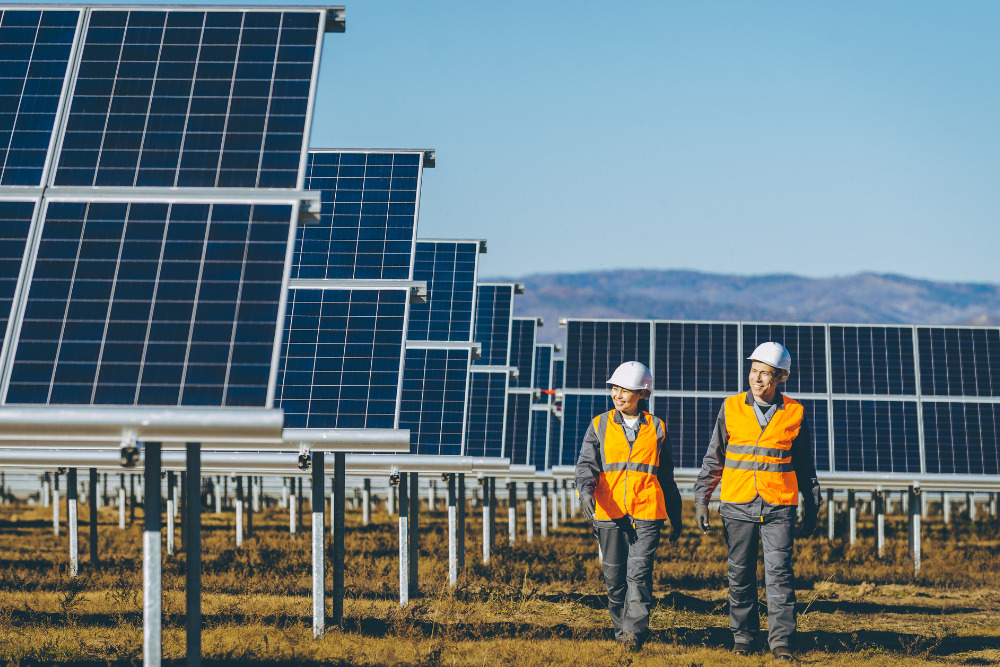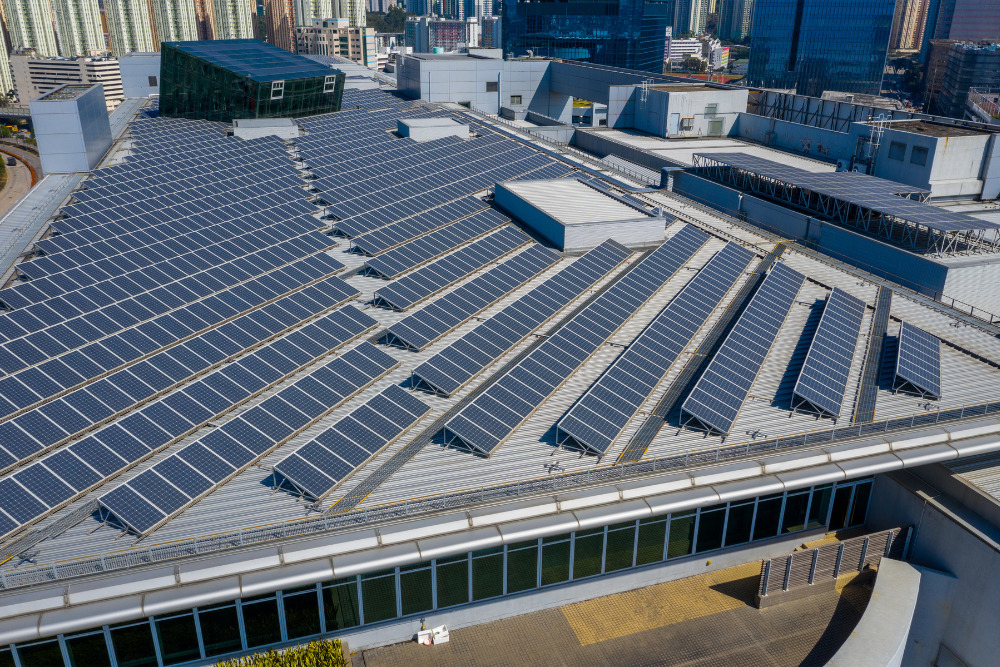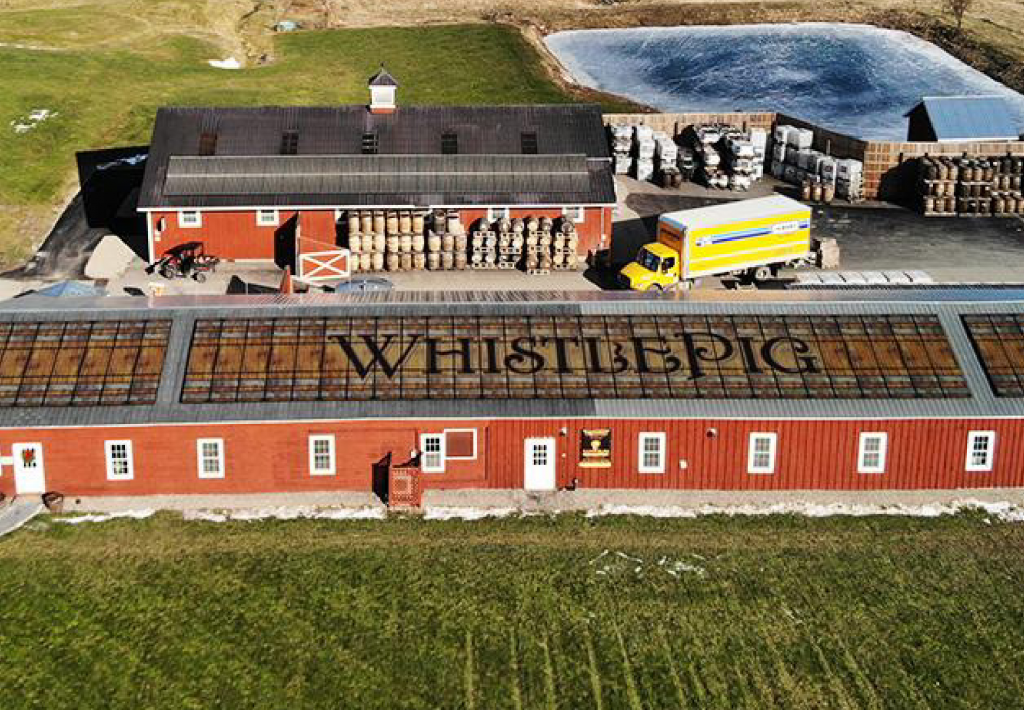
The efficiency of commercial solar panels typically ranges from 15% to 20%, and some can reach up to 25%. Solar technology has had many advancements over the years, and researchers continue to perform tests and push for even greater efficiency of solar panels and energy output of commercial solar systems.
How Is The Efficiency Of Commercial Solar Panels Measured?
The conversion of sunlight into usable electricity is called solar panel efficiency. It is measured in percentages. The formula for calculating efficiency involves dividing the panel power (in kW) by the area of the panel (length X width), and multiplying by 100.
Currently, high-efficiency commercial solar panels can achieve about 20% efficiency. PV cells made from gallium arsenide (GaAs) in perfect conditions reach around 25%.
However, as solar cell technology is ever-evolving, there’s an industry-wide goal of reaching 50% efficiency, and it may not be as far off as once thought. A research team from the National Renewable Energy Laboratory (NREL) recently achieved the highest efficiency rating to date, at 47.1%, through multilayering and using multijunction cells. While the technology worked in the lab, there are numerous challenges to making this type of solar energy system commercially available.
Are Commercial Solar Panels More Efficient Than Residential Solar Panels?
Commercial solar panels are more efficient than residential ones due to their size. They are bigger, so they have more solar cells, which produce more solar power. This increases their conversion efficiency by about 2% compared to residential panels.
Factors like semiconductor material, manufacturing method, peak daylight hours, and even local temperature can affect the energy production of both types of solar panels.

How Much Power Do Commercial Solar Panels Produce?
72-cell solar panels generate around 400 watts, while 500 watts is standard for 96-cell panels. Both can be used commercially. The power output varies depending on the size, number of panels, positioning and amount of sunlight they receive, and geographic location.
The type of panel also affects solar cell efficiency and the amount of energy it produces. Monocrystalline silicon panels are more efficient than polycrystalline solar panels, though the latter is more cost-effective and when installed over large commercial roof spaces, can generate sufficient power.
Thin-film have a 2-3% lower efficiency than other panels, but they’re ideal for solar installations on odd-shaped roofs since the size and shape can be customized.
The latest technology in commercial solar panels, PERC (Passivated Emitter and Rear Cell) panels are around 5% more efficient than monocrystalline solar panels. They’re slightly more expensive to manufacture than mono panels, but because of their higher efficiency, businesses may be able to install smaller solar modules for less upfront costs.
Is Commercial Solar Worth It?
Businesses that install solar panel systems enjoy many benefits, including:
- Decreased electricity bills, which reduces operating costs and frees up monthly cash flow for other initiatives
- Reduced effect of power outages since there is another energy source, especially for businesses that install a solar battery as part of their photovoltaic system
- Tax credit eligibility, as well as additional rebates and local incentives
- Increased property value, as investors and business owners recognize the value of a business that has invested in photovoltaic technology
- Improved customer perception, as companies that focus on energy efficiency initiatives and sustainability tend to be more successful
- Low-maintenance, clean energy from a renewable resource that reduces a business’s carbon footprint
- Built-in branding with optional SolarSkin, custom-printed solar panel coatings that increase visibility and boost revenue
The main disadvantage of going solar for is that solar panel installation is a long-term investment with high upfront costs. However, many incentives exist to make commercial solar more affordable.

How Long Does It Take For Commercial Solar To Pay For Itself?
The time it takes for a commercial solar system to break even with the initial system investment is called the solar payback period. To calculate your payback period, consider the cost of the system minus any incentives, divided by your average monthly savings on electricity bills.
For example, consider a business that installed a $500,000 solar PV system and took the 30% ITC (federal investment tax credit). If they saved $2,000 per month on their electric bill ($36,000 annually), their payback period would be roughly 9.5 years.
Once the panels pay for themselves, you can reap the benefits of free clean energy for many years to come. Most systems have a lifespan of 25-30 years, though some last even longer. High-efficiency solar panels often come with a 25-year warranty that guarantees a minimal power output at that time.
SunPower, REC, and Panasonic are known for their 25-year warranties and for manufacturing some of the most efficient solar panels on the market.


